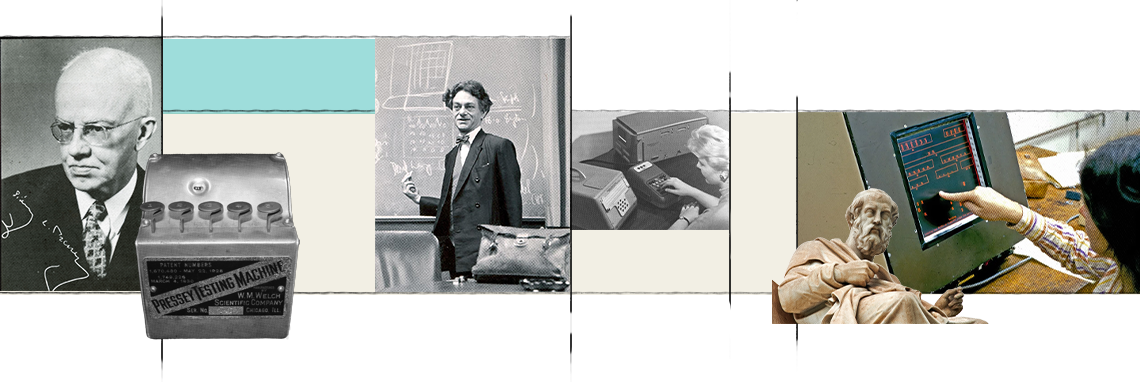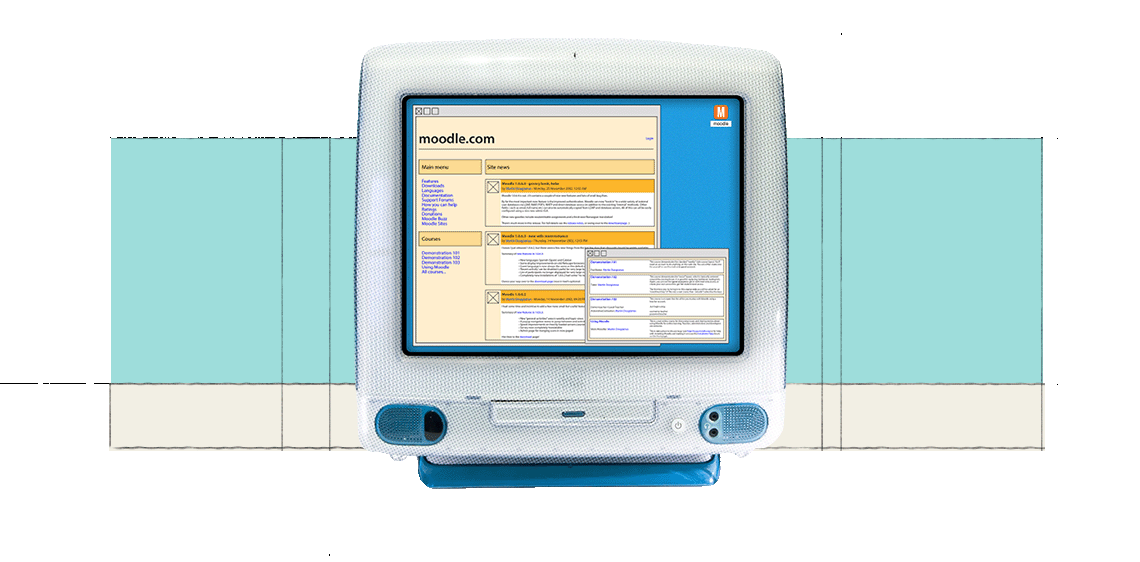Today, learning and development opportunities are available in the palms of employees’ hands. From preparing new hires to delivering compliance training and more, learning management systems (LMS) help employees reach their potential on their time.
But this upskilling technology wasn’t always so readily available. In fact, the LMS’s journey to consumer-grade access and convenience spans almost 100 years.
The dawn of automated learning
In 1924, a professor from Ohio State University pioneered a concept decades ahead of its time. Sidney L. Pressey’s self-paced testing machine offered an early form of real-time feedback through practical exercises and multiple-choice questions. Unlike a traditional test, however, his prototype didn’t let students proceed until they chose the right answer. This method set a precedent for how future iterations of the LMS verify an employee’s comprehension.

Over three decades later, learning tech received a personalized touch. Scientists Gordon Pask and McKinnon Wood evolved Pressey’s invention with the Self-Adaptive Keyboard Instructor (SAKI). As learners answered questions correctly, SAKI gradually increased the training material’s difficulty.
The LMS gained a personal touch as researchers began experimenting with early computers in the 1960s. Developed by the University of Illinois, Programmed Logic for Automatic Teaching Operation (PLATO) allowed trainees to monitor their own progress.
PLATO also eased collaborative learning with a built-in chat module. And its orange plasma touchscreen — introduced in 1972 — brought an unprecedented level of interaction to learning and development.
And in 1983, MIT and IBM introduced the next leap in digital learning with Project Athena. This resource allowed students to access reference materials from any computer on campus. Project Athena set the stage for an upcoming wave of online training.
The LMS breakthrough
The LMS we know today emerged in 1991 with EKKO, a fully featured training software built by the NKI Distance Education Network in Norway. Three years later, Canada’s New Brunswick Learning Network introduced an LMS designed for business professionals.
The new millennium ushered in the first open source LMS, Moodle. Famed for its personalized learning experience, Moodle empowered users to choose their own training topics and development paths.
 As mobile devices picked up steam in the 2010s, ease of use, customization and a revolving supply of multimedia training material formed the LMS employees now enjoy.
As mobile devices picked up steam in the 2010s, ease of use, customization and a revolving supply of multimedia training material formed the LMS employees now enjoy.
Why the right LMS matters
Though many employees can find the training they need at their fingertips, the need for an engaging, intuitive LMS is still high. According to Harvard Business Review, 70% of employees claim they don’t have the skills necessary for their jobs.
Learning and development propel workforces into the future, and each year brings new insight and challenges. In a study from LinkedIn, the top three focuses for training strategies in 2022 are:
- leadership and management training
- upskilling and reskilling employees
- digital learning
A powerful learning experience delivers each of these needs to employees through the same easy-to-use app they manage their entire HR life cycle. This makes it simple to assign courses and craft a customized training path to meet even more specialized business needs. Plus, the ability to easily track employees’ progress and incorporate their development into performance reviews makes guiding a workforce’s growth simple and efficient.
For more about the history of training and other workplace mainstays, watch our HR:evolution series. And explore Paycom to see how it empowers employees to upskill and manage their HR data.
DISCLAIMER: The information provided herein does not constitute the provision of legal advice, tax advice, accounting services or professional consulting of any kind. The information provided herein should not be used as a substitute for consultation with professional legal, tax, accounting or other professional advisers. Before making any decision or taking any action, you should consult a professional adviser who has been provided with all pertinent facts relevant to your particular situation and for your particular state(s) of operation.
